There are many different link building tactics and strategies out there. Some of them can be very effective, while others no longer work these days and will most likely just waste your time.
Here’s what works really well today, according to our observations:
1. Replicating your competitor’s backlinks
If someone is linking to your competitor, there’s a good chance that they might be open to linking to you too.
A good way to kick off this strategy is to study who links to the actual homepages of your competitor’s websites. These people are mentioning the business as a whole and not some specific webpage, which you might not have on your own website.
For example, here are a couple of pages (with decent search traffic) that link to our homepage:
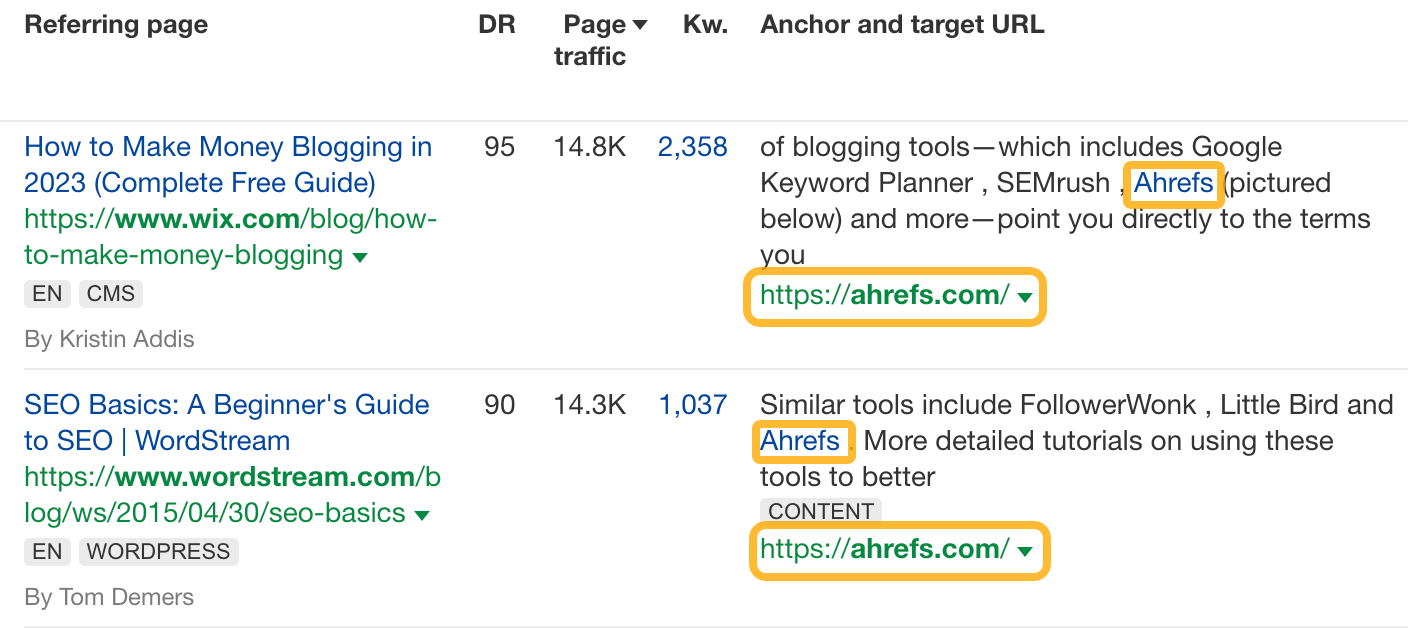
As you can see, in both cases, Ahrefs is mentioned right next to some other marketing tools, which only proves the point that asking to be mentioned alongside your competitors is a fair request.
Once you’re done with the homepage links, the next step is to study which pages on your competitor’s websites have the most links. We have a report in Site Explorer just for that, which is called “Best by links.”
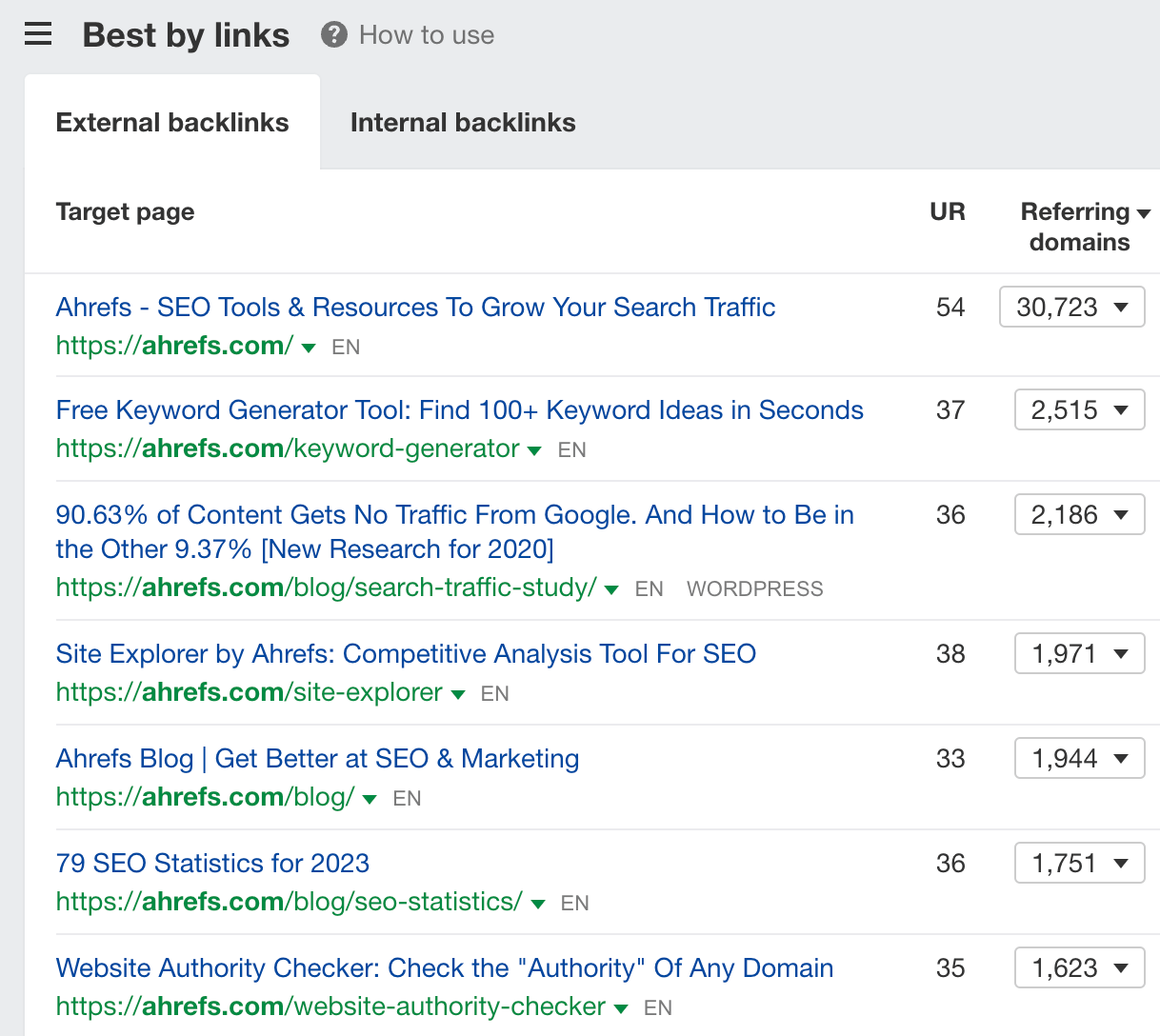
By looking at the Best by links report for ahrefs.com (above), it’s easy to spot what kinds of pages have brought us the most links:
- Our homepage – Because lots of people mention Ahrefs as a software or as a company.
- Our free tools – Keyword Generator and Website Authority Checker are two of the many free tools we developed. And each of these tools is attracting a ton of backlinks organically.
- Our blog – Thanks to a consistent output of useful content, lots of people are now recommending our blog and linking to it.
- Our research studies – People love insightful data. So the research studies that we publish tend to get lots of links.
Try browsing the Best by links report for your own competitors and see what kinds of pages bring them links. Once you identify what worked for them, you can create similar (or better) resources on your own website.
After you’re done with the above tactics, I suggest that you set up a backlink alert and get notified whenever your competitors get new links. This way, you’ll be able to immediately reach out to whoever linked to them and try to get yourself added on the same page.
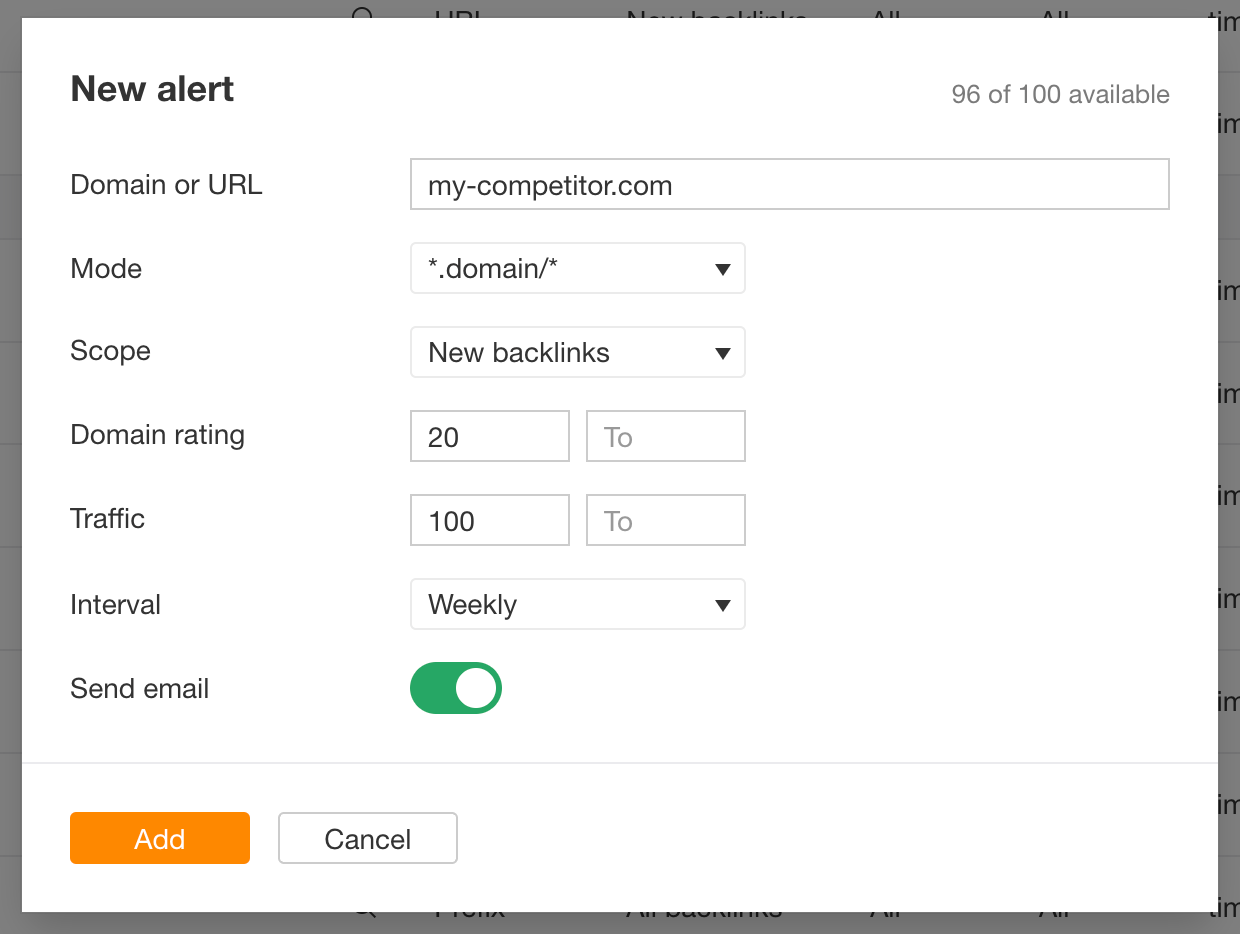
All in all, your competitors are a goldmine of great link opportunities. And as you dig deep into their backlinks, you’ll soon see some link building patterns, which you can leverage on your own website. We wrote a pretty detailed article on that topic, actually. Make sure to check it out.
2. Targeted link outreach
So let’s say you’ve done your keyword research and a very specific page that you need to rank well in Google for a certain keyword. And you need to build links to that very specific page.
Well, the best place to start is to pull up the top-ranking pages for your desired keyword and research where they got their links from.
Just put your keyword into Ahrefs’ Keywords Explorer and scroll down to the “SERP Overview” widget. You’ll see the top-ranking pages along with how many backlinks (and linking domains) they have.
So let’s say you want to rank for “best productivity apps.” Here’s how the SERP for this keyword looks:
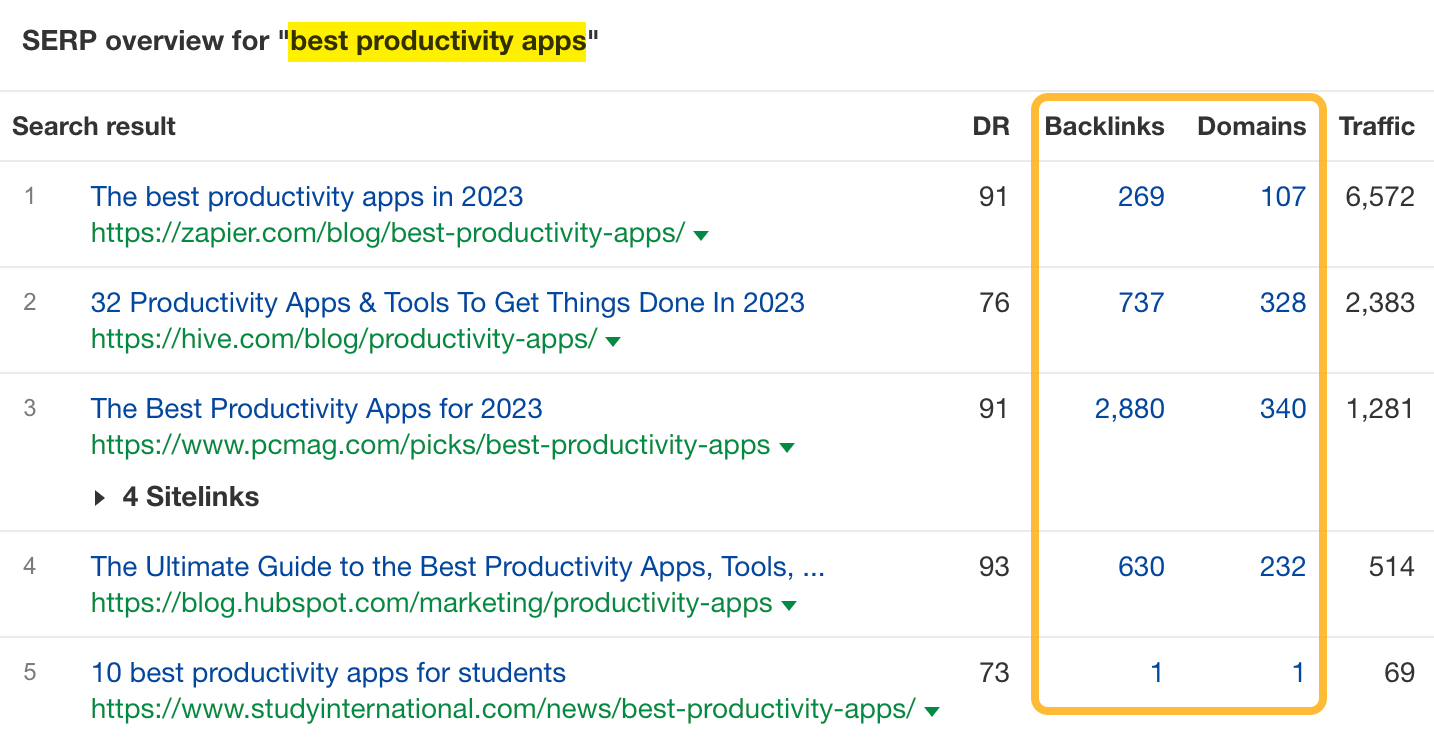
Once you click on any of the backlink numbers, you’ll be redirected to a list of backlinks of a given page in Ahrefs’ Site Explorer.
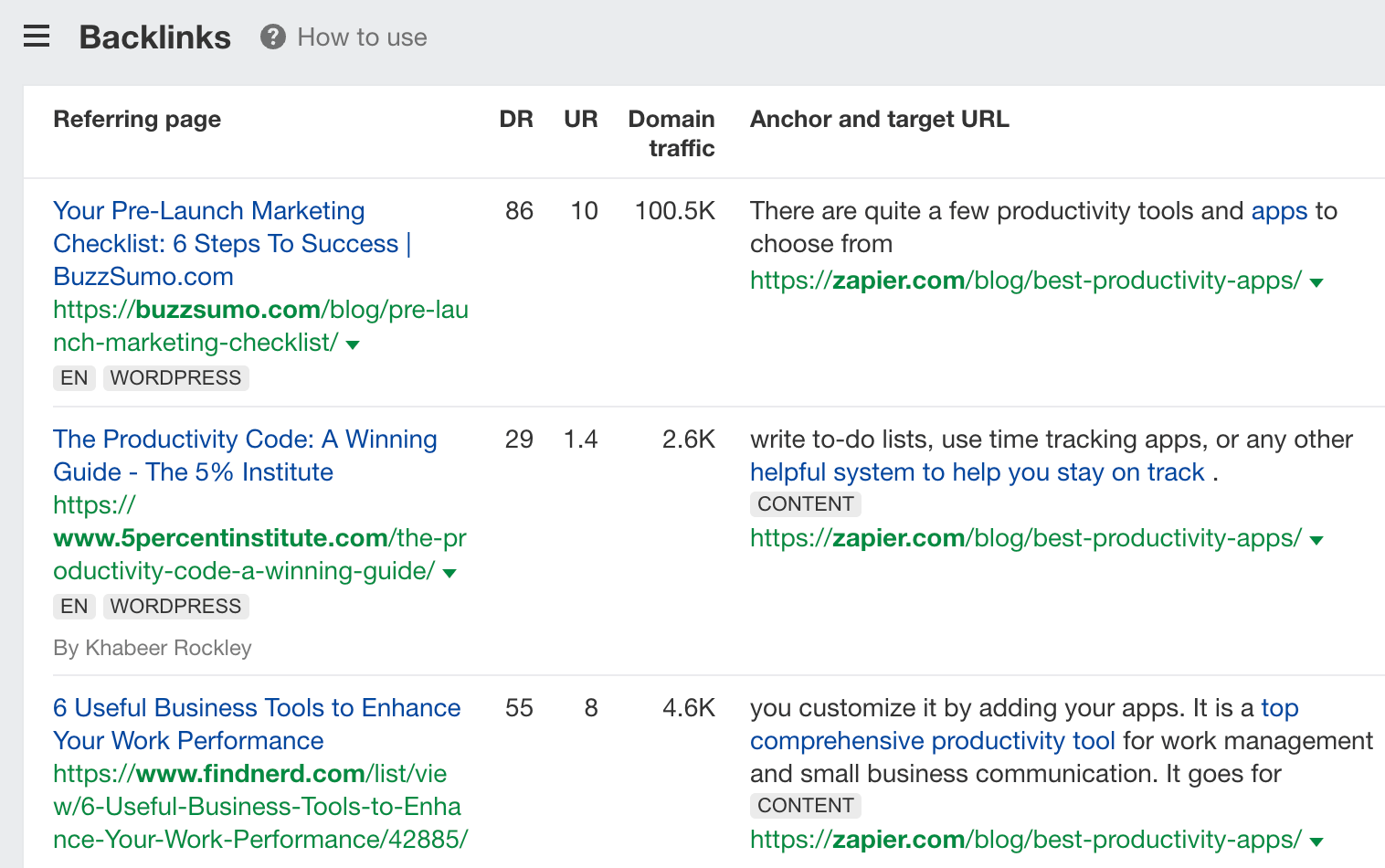
Here’s what you need to do next:
- Apply some filters to focus on “meaningful backlinks” only
- Manually go through the list of remaining pages, open them one by one, and see if the context of it allows for a link to your page to be added
- Reach out to the owners of these websites and try to make a case for adding a link to your resource on their page
The next place you turn to for finding potential linkers is among people who mentioned your topic on their websites. For example, if you need to build links to a productivity app, you want to get in touch with all websites that have mentioned the word “productivity” somewhere on their pages.
You can try to search for them in Google, but it only gives you a limited number of search engine results. Just a couple of hundred on average.
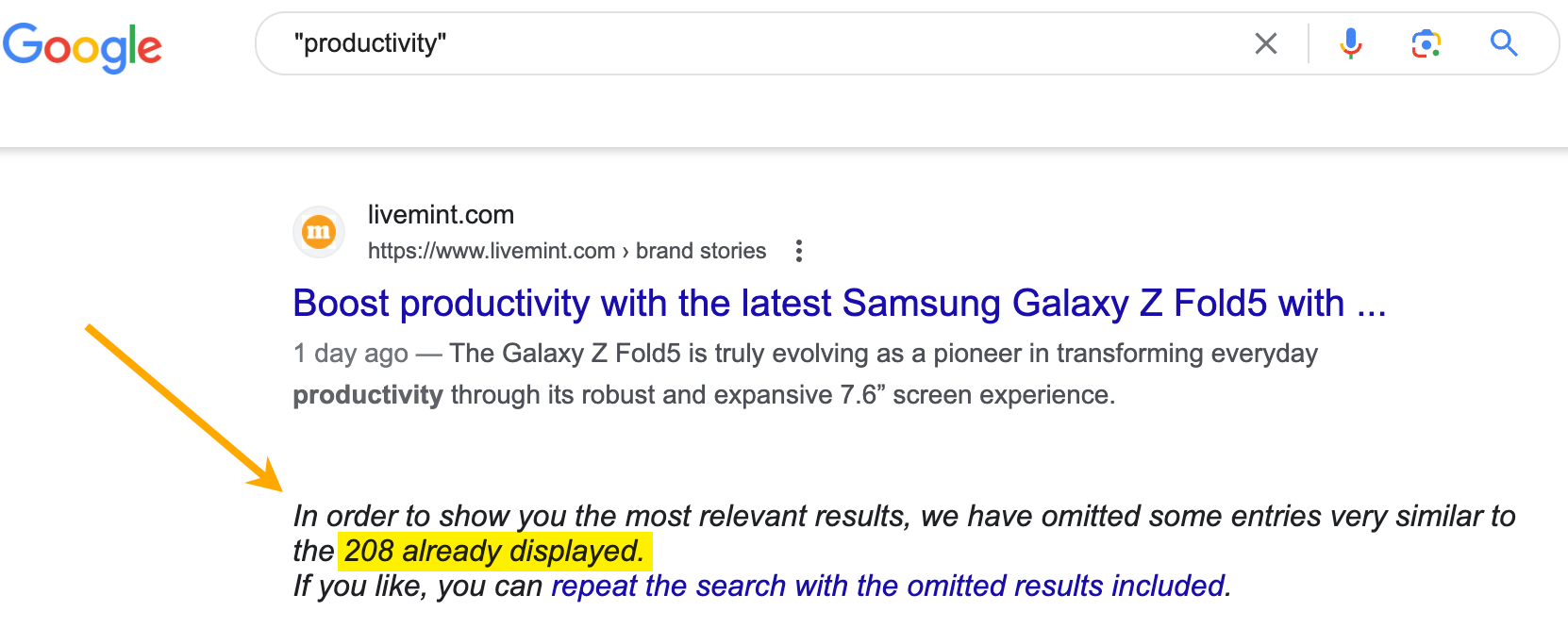
A much faster way to find thousands of pages that mention your topic is Ahrefs’ Content Explorer.
For example, if you search for the keyword “productivity app,” you’ll get over 120,000 pages that mention this keyword.
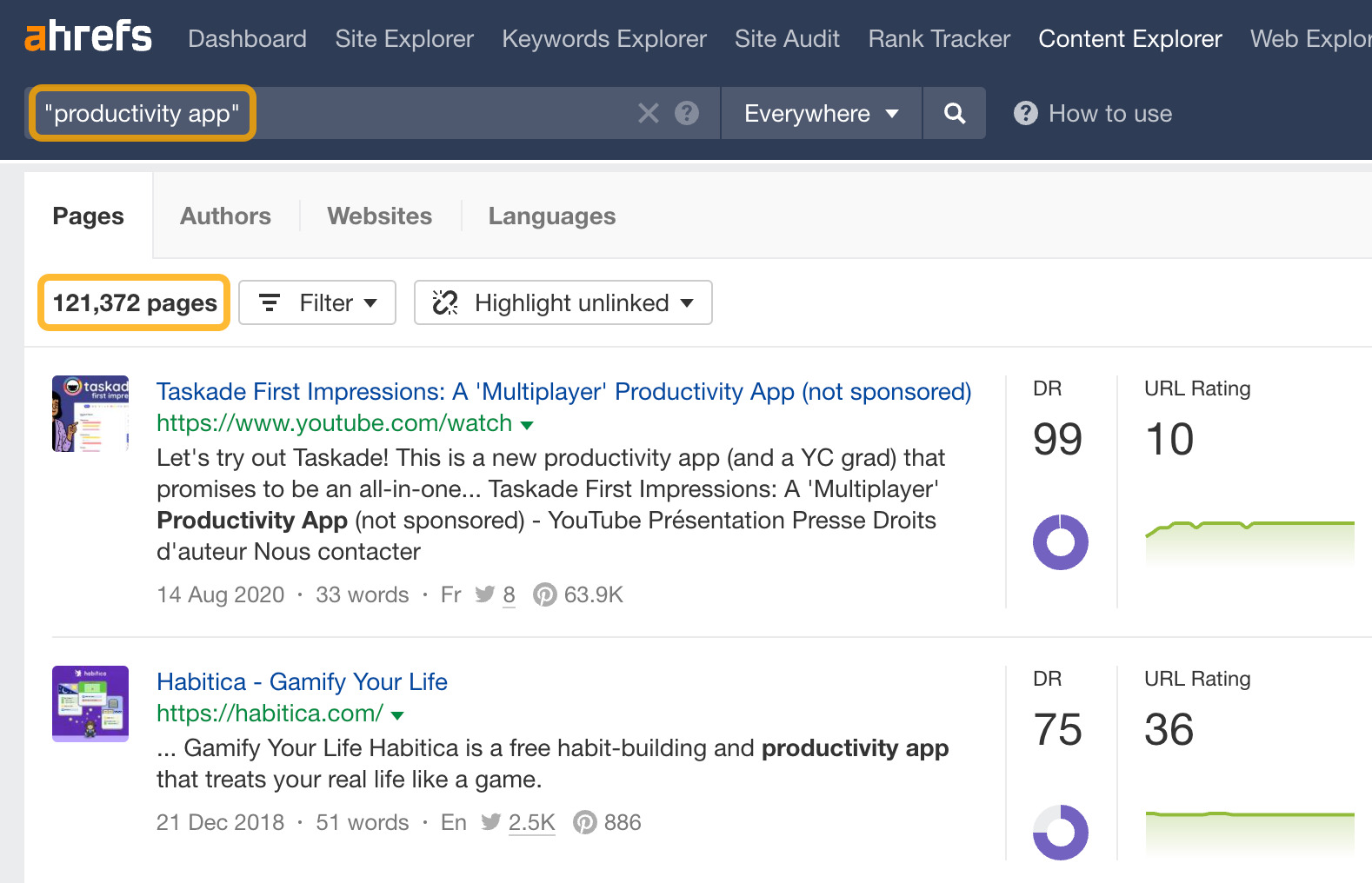
From there, you might want to apply the following filters to narrow down the list of results to the most meaningful ones:
- Language: English (or whatever language you’re interested in)
- Website traffic: from 1,000
- Domain Rating: from 30
- Filter explicit results
- Filters: one page per domain, exclude homepages, exclude subdomains
This way, you’ll end up with slightly over 4,000 pages. Which is a way more manageable number of link prospects to work with.
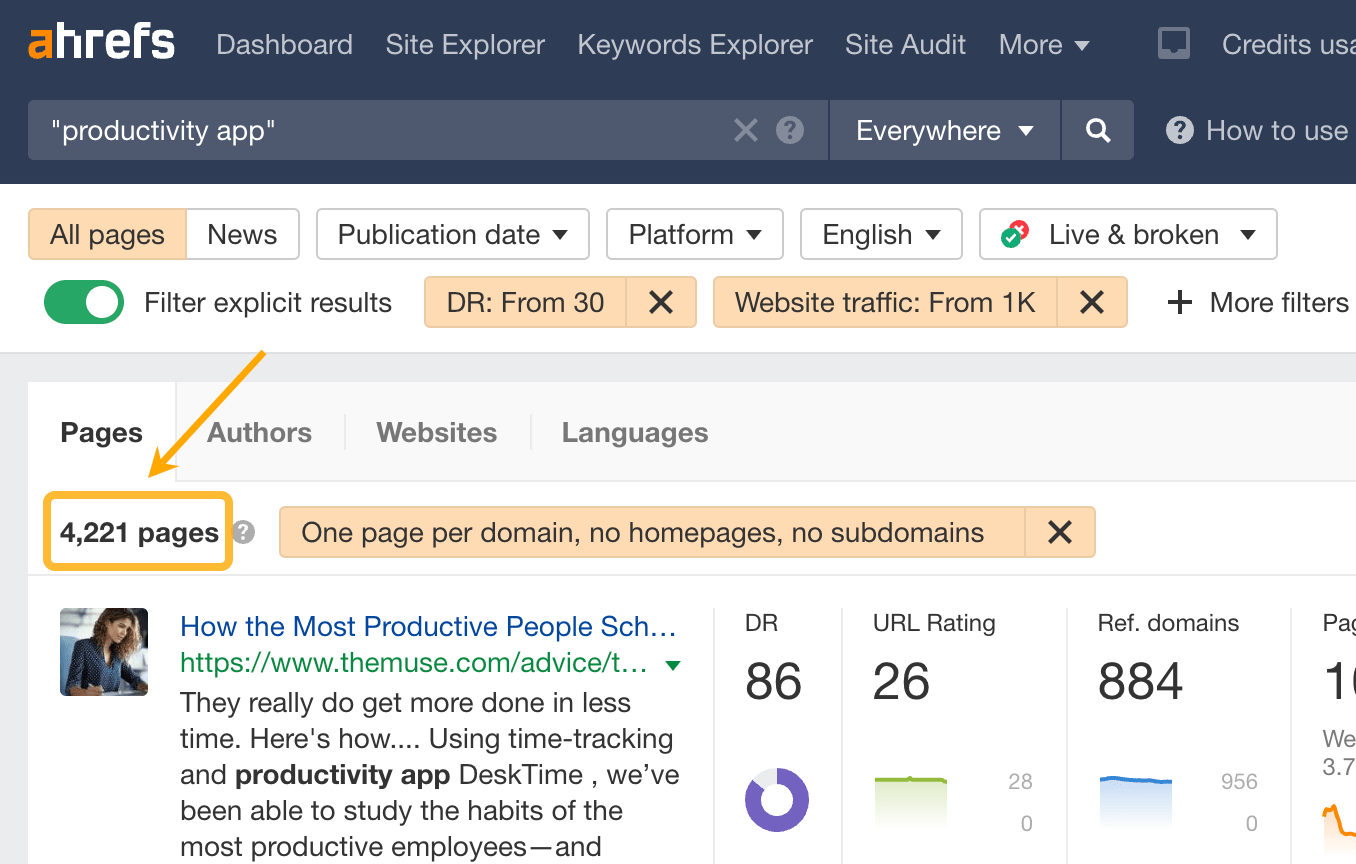
And your plan of action here would be very similar to the previous one. Review these pages one by one and reach out to the respective site owners if you think there’s a chance that they might agree to link to your page from theirs.
In all fairness, your success rate with both these groups of link prospects will likely be quite low. I know it because I did this kind of link building outreach not that long ago. And from my conversations with professional link builders, that’s pretty much the norm.
- Most people won’t bother replying to your emails.
- Many will reply just to politely decline your request.
- Some will ask for money or a link exchange.
- And only a few will actually link to you.
That’s why I mentioned earlier that you should start building relationships with all these website owners before you actually ask them for a favor.
A good way to do this is to reach out to them while you’re still in progress of creating your page. You can ask for their opinion, a quote, or even suggest to feature some of their relevant work.
And it is always of great help if something that you’re working on is of actual interest to them.
For example, back when I was running my personal blog, I reached out to 500+ fellow bloggers asking them to share some of their Google Analytics data for my small research study. That request piqued their interest, and many of them helped me out with it.
After my research was done and published, I made sure to give a heads-up over email to all these 500+ bloggers whom I originally reached out to. And that is how this article became the most linked-to page on my blog:
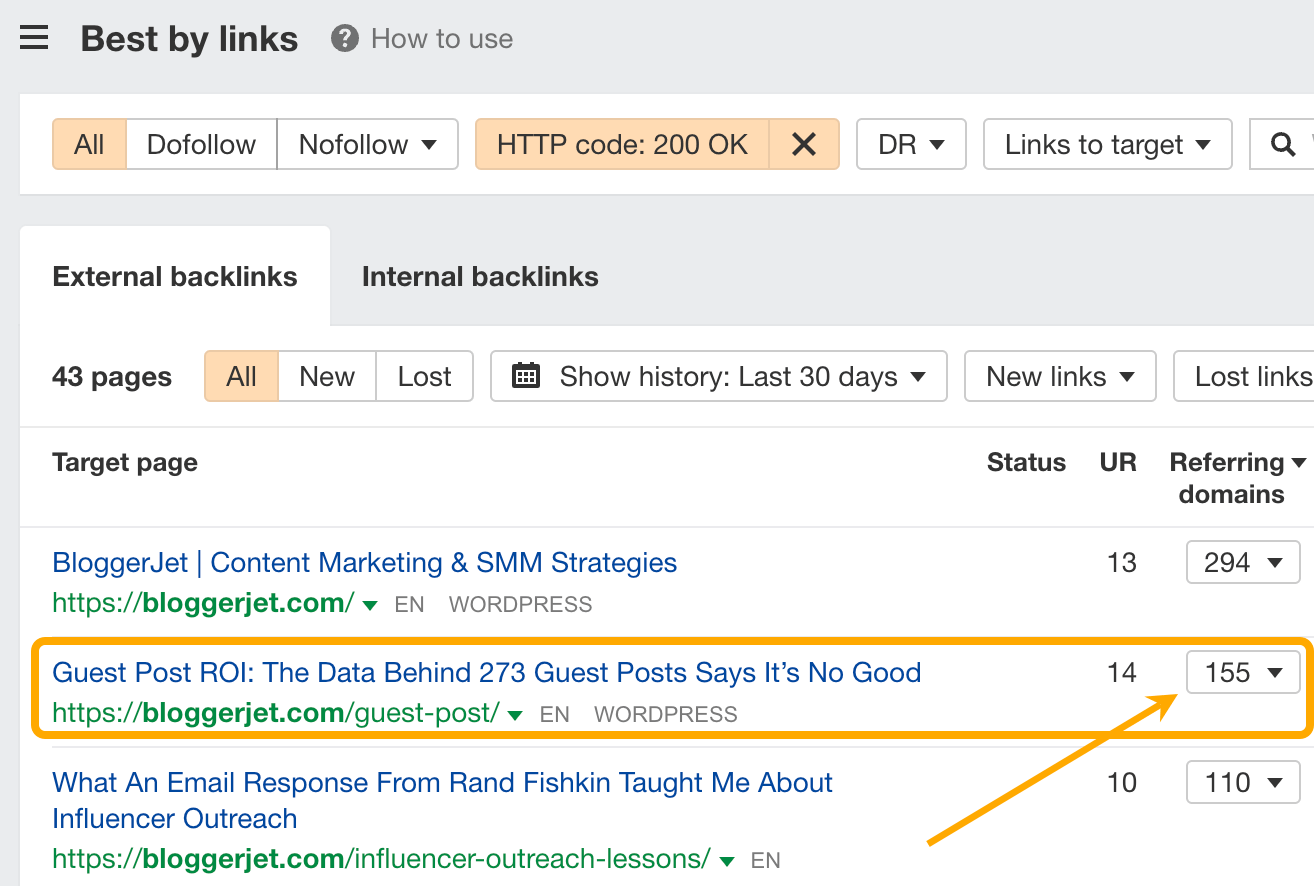
But, most importantly, all the hard work I poured into this research has gained me respect from many of these bloggers. And whenever I later reached out to them with some other request, I was no longer a “nobody” and they were more open to talk to me.
In other words, your email outreach will be massively more effective if what you’re working on actually deserves people’s attention.
3. Creating linkable assets
In SEO, we use the terms “linkable asset” or “link bait” to refer to content that is strategically crafted to attract links. Such linkable assets can take on many different forms:
- Industry surveys
- Studies and research
- Online tools and calculators
- Awards and rankings
- How-to guides and tutorials
- Definitions and coined terms
- Infographics, GIFographics, and “Map-o-graphics”
Earlier, I already mentioned two examples of linkable assets: a blogger survey I did for my personal blog and a research study we did here at Ahrefs. So let me show you a cool example from someone else.
The folks at Aira, a digital marketing agency, run an annual “The State of Link Building Report” by surveying hundreds of leading industry professionals. This report has brought them backlinks from over 600 different websites:
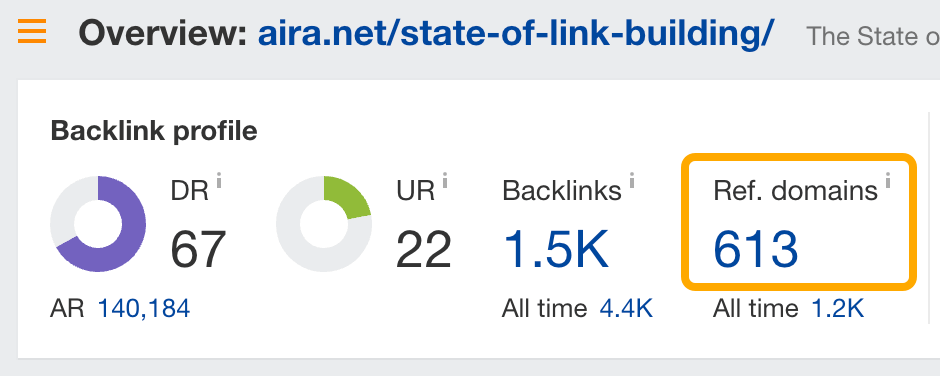
And one of these backlinks is coming from the very homepage of ahrefs.com (which has a URL Rating of 54):

Their report contains some data that is very favorable for our company, so we couldn’t resist featuring it on our very homepage. Many marketers refer to this kind of link bait as part “ego bait.” But in Aira’s case, I don’t think it was deliberate, because they can’t know in advance what the results of their industry survey would be.
So how do you put this link building strategy into action?
Well, first of all, you need to come up with an actual idea of a link-worthy page.
You can start from a simple brainstorm based on the abovementioned list of linkable asset types:
- Can you survey your industry about something?
- Can you calculate some meaningful statistics from the data that your business has access to?
- Is there any interesting experiment, which you could carry out?
- Does your industry need some kind of free online tool?
- Etc.
The folks from Authority Hacker have recently published a pretty detailed video on YouTube, explaining how they use surveys to create linkable content for their websites. Check it out; it’s very actionable:
And if you fail to brainstorm any exciting ideas, you can always go back to studying the websites of your competitors and figuring out what types of linkable assets worked for them.
Just don’t forget that even the best linkable assets have to be promoted in order to attract links. Because people can’t link to things they don’t know exist.
So let’s talk about content promotion real quick.
4. Content promotion
We actually have a separate article listing 21 content promotion tactics. But for now, I want to focus your attention on just the following three:
- Advertising – A very easy way to promote your resource to thousands of relevant people but might require a significant budget.
- Influencer outreach – You can look up all the active thought leaders in your space and reach out to them whenever you publish something worthy of their attention. If you’re lucky, they might share it with their followers.
- Building a following – You should definitely start building an email list (if you haven’t already), as well as be active on platforms like Twitter and LinkedIn. And if you consistently publish quality content, more people will start following you and many of them might end up linking to your content.
And don’t forget to promote your older content by mentioning it in your newly published content.
As Ryan Holiday said in his book “Perennial Seller”: “Creating more work is one of the most effective marketing techniques of all.”
5. Guest posting
This link building tactic is actually frowned upon by some SEO professionals. Mainly because some people tend to overdo it to the point of being spammy.
And yet guest blogging is one of the most popular ways how SEOs build links these days:
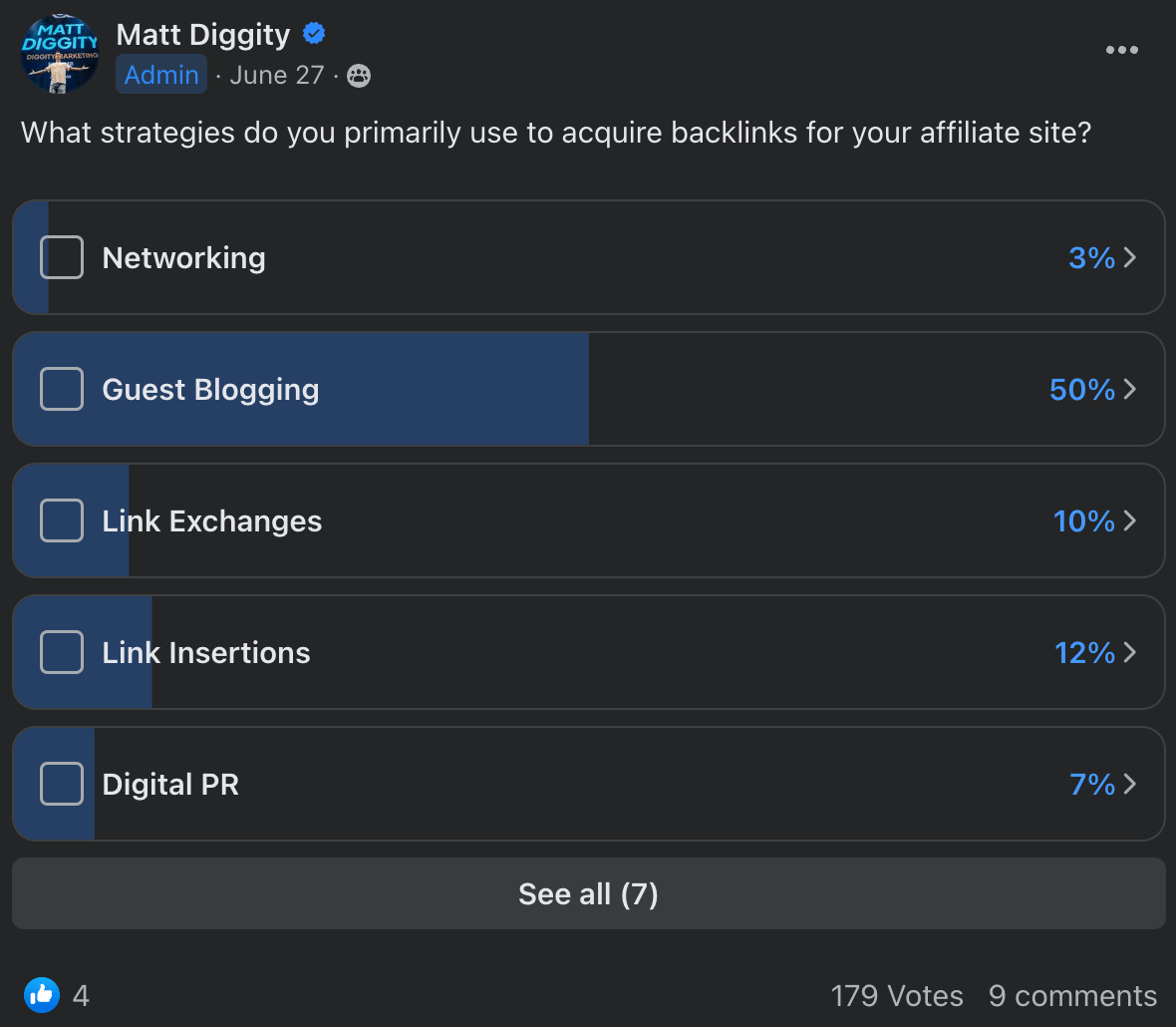
Even here at the Ahrefs Blog, we do allow guest contributions once in a while. And our guest authors might link to some of their own resources, as long as they’re relevant to the topic of their post. Which means you can build links with guest articles in a perfectly legit way.
But how do you get your content published on the top blogs in your industry? Well, you just need to pitch them a really compelling article idea.
And here’s a simple tip on how to come up with content ideas that are hard to say no to. Just find a few competitors of the blog you want to write for and use the Content Gap tool to find which topics bring them lots of traffic but weren’t covered on the blog that you’re pitching.
For example, a quick Content Gap analysis of our own blog against the blogs of our competitors reveals a bunch of great topics that they get search traffic from, while we don’t.
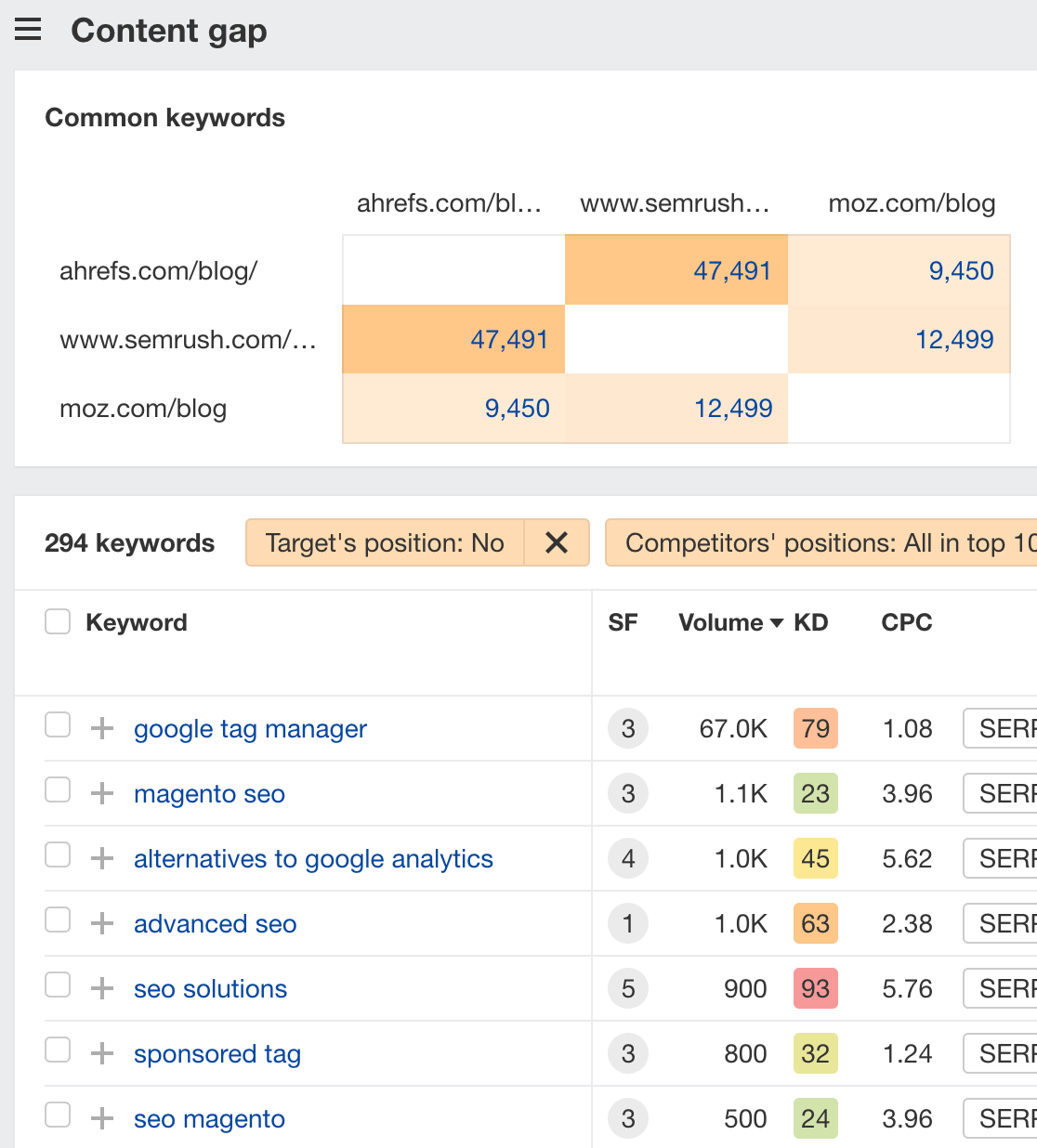
If someone made a compelling pitch that they could write a decent post on any of these topics, it would be very hard for us to turn it down.
A somewhat lesser-known guest posting tactic is to find an underperforming article on the blog you want to write for and offer them to rewrite it from scratch. If you can persuade them that you can greatly improve that article and it will end up ranking higher in Google and bringing them more search traffic, I’m sure they’ll have a hard time resisting your pitch.
How do you find these underperforming pages? Just open the Top pages report in Site Explorer and use the “Traffic” filter:
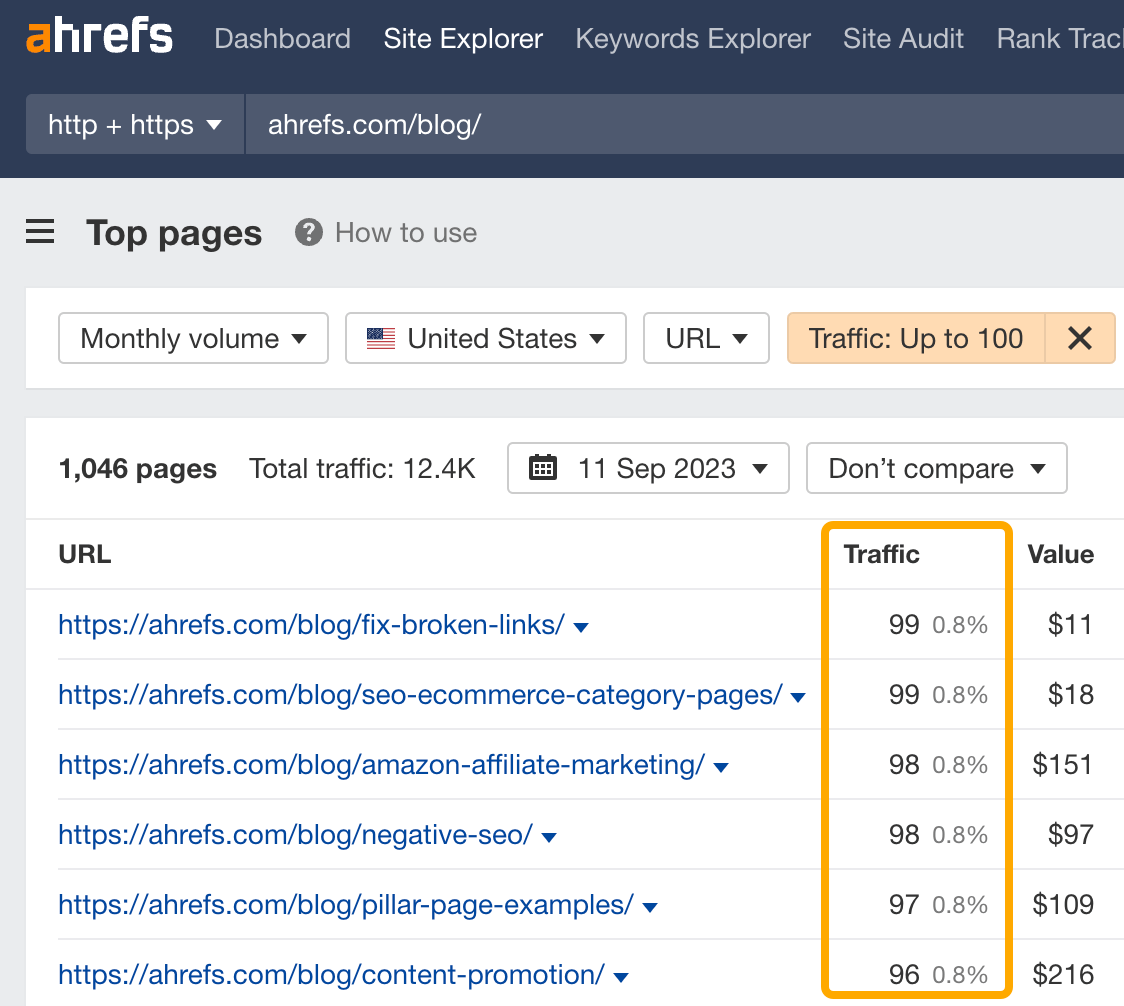
Leave a Reply